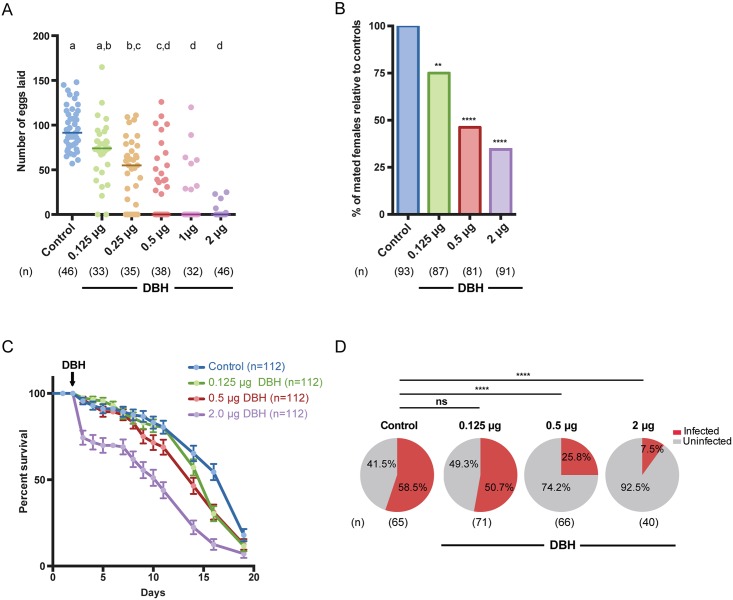Fig 1. Disrupting steroid hormone signaling by topical application of the 20E agonist methoxyfenozide (DBH) affects oviposition, mating, longevity and P. falciparum development.
(A) DBH-treated mated females failed to oviposit or laid a significantly lower number of eggs after a blood meal in a dose-response manner; whereas oviposition occurred in 100% of controls (Kruskal-Wallis test, p < 0.0001). Letters indicate post hoc significance (Dunn’s post hoc test). (B) The ability of virgin DBH-treated females to become inseminated was significantly reduced compared to control females (Fisher’s exact test for 2 μg, 0.5 μg, and 0.125 μg DBH: p < 0.001, p < 0.001, p = 0.024) (C) The median survival time of DBH-treated females was significantly lower than control-treated females (Log-rank test for 2 μg, 0.5 μg, and 0.125 μg DBH: p < 0.0001, p = 0.0044 and p = 0.0141, Median survival: 2 μg, 0.5 μg, and 0.125 μg DBH = 11,14, and 16d; Control = 19d). Data are presented as the percentage of survival of 4 replicates with Standard Error. Arrow indicates day of DBH application. (D) Females treated with 2 μg or 0.5 μg DBH showed an 87% and 56% reduction in P. falciparum infection prevalence (measured as number of females with oocysts 7 days post-infectious blood meal compared to controls), respectively (Fisher’s exact test for 2 μg and 0.5 μg DBH: p < 0.0001 and p < 0.0001). The number (n) of females analyzed is indicated in each panel.

